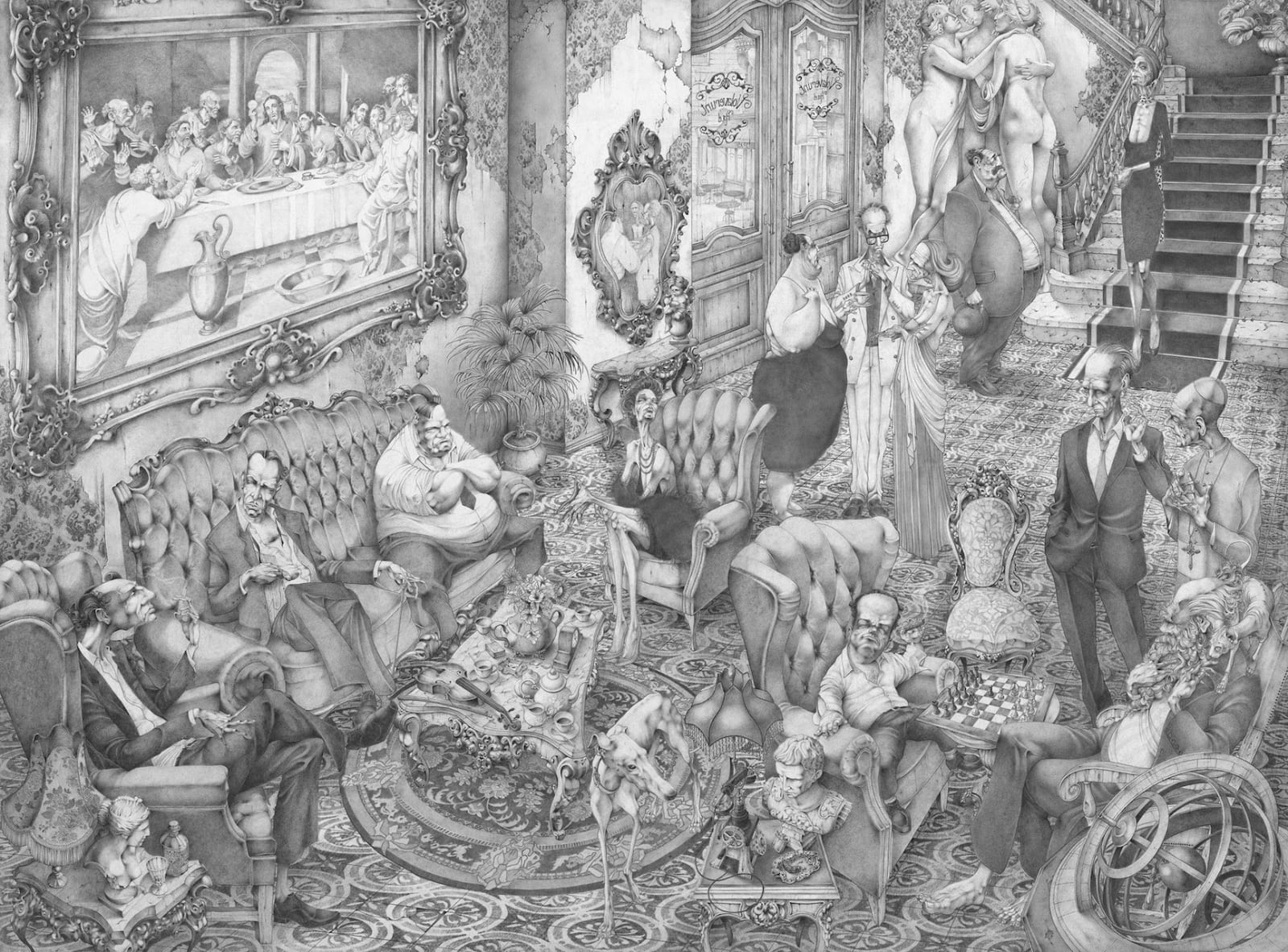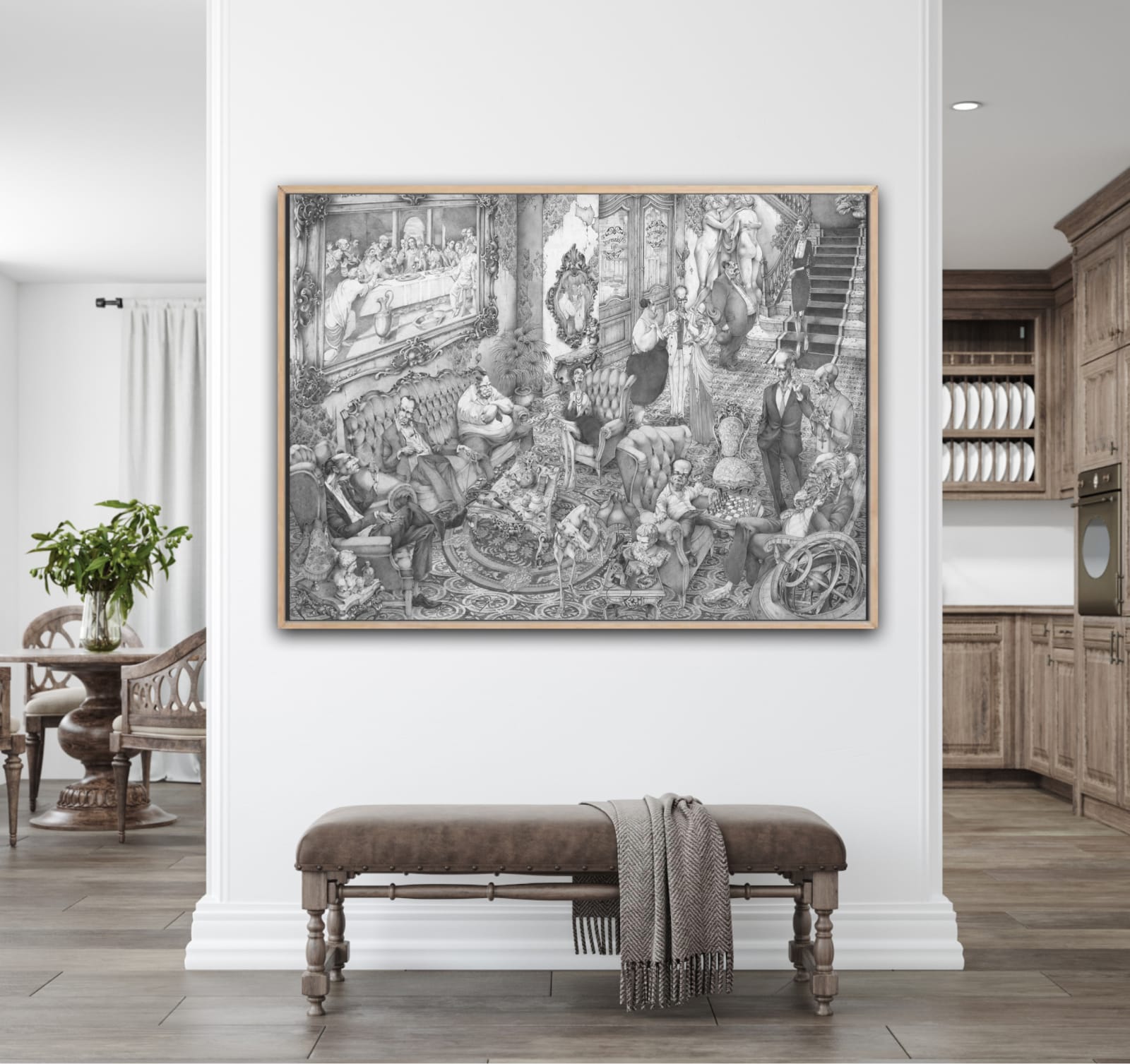



Adolfo Arenas Alonso Spain, 1972
Unframed giclée print on hanhemühle paper hand finished by the artist.
43 3/4 x 59 in
Further images
"It was the best of times, it was the worst of times..." is a phrase taken from the beginning of the historical novel A TALE OF TWO CITIES by Charles Dickens with which Volaverunt could be defined. It seemed to me that this quote is perfect to accompany the image.
Volaverunt is full of details that serve to justify the background of the story that I want to represent. Details that were etched in my retina and fed my imagination, such as the bottle of absinthe with which many an artist got drunk and creative with, the violin with only two ropes played at the Titanic or the Gauloises cigarettes that Picasso among many others smoked, and moments as significant to me as Fellini's Casanova going down the stairs, still dreaming of better times. The visual story of the work was planned to be based on Gethsemane, the Prayer in the Garden, where the betrayal took place. The hotel lobby was meant to be my idea of Purgatory, the waiting room. The stairs would lead to heaven and the exit is the closest to the world of Dante's Inferno.
In this composition, all the characters are playing a role. The representation of God would be the old man playing chess, with the dwarf representing all humankind with all their defects. Judas would be the cardinal who speaks to the archangel Gabriel, the Devil would be the cat that prostrates himself on the old man's shoulder. All these scenes are happening next to a mechanical globe, which is an allegory of the way we live. The chess game is the Spanish opening of Ruy López, I wanted to leave part of my signature there, drunk with nationalism for being so far from home while living abroad. The Three Graces in the background represent lust, perhaps one of the pleasures that most justifies existence for me.
The Hall of the Last Supper by Juan de Juanes resides to delimit the border between the profane and the sacred. As an anecdotal fact, the last thing I drew was the broken tile near the lower right corner as a symbol of heterodoxy, nothing is the same.




